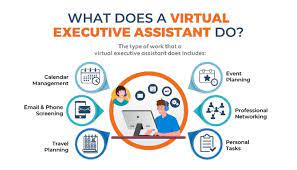In today’s fast-paced business environment, managing human resources (HR) functions efficiently is crucial for the success of any organization. However, handling HR tasks can be time-consuming and complex, requiring specialized skills and expertise. It is where hiring an HR virtual assistant can make a significant difference. In this comprehensive guide, we will explore the process of hiring an HR virtual assistant, from understanding their role to finding the perfect fit and effectively managing their workload for maximum efficiency.
Understanding HR Virtual Assistants
HR virtual assistants are remote professionals providing administrative support for various HR functions. They handle recruitment, employee on boarding, payroll processing, benefits administration, and HR documentation management. The primary advantage of hiring an HR virtual assistant is their flexibility and cost-effectiveness, as they can work remotely and adapt to different organizational needs. Additionally, they bring expertise in HR processes and regulations, helping organizations streamline their HR operations.
Assessing Your HR Needs
Before Hire a HR Virtual Assistant, assessing your organization’s specific HR needs and requirements is essential. Identify the HR tasks and responsibilities you need assistance with, such as recruitment, employee relations, or compliance management. Determine the volume of HR work and the level of support required, including the number of hours per week and any specific skills or qualifications you’re looking for. It will help you set clear expectations and goals for the assistant’s role.
Finding Candidates
Once you’ve identified your HR needs, the next step is to find suitable candidates for the role. You can explore various sourcing channels, including freelance platforms, job boards, referrals, and HR virtual assistant agencies. Craft a compelling job description that outlines the tasks and responsibilities and the skills and qualifications required for the role. Be sure to highlight the unique aspects of your organization and the opportunities for growth and development.
Evaluating Candidates
As applications start coming in, it’s essential to carefully evaluate each candidate to find the best fit for your HR needs. Review resumes and portfolios focusing on relevant experience in HR roles, such as HR administration or recruitment. Consider conducting skills assessments or test tasks to evaluate candidates’ proficiency in HR duties, such as drafting HR documents or conducting initial candidate screenings. Additionally, check references and review work samples to gauge their work’s quality and suitability for the role.
Interviewing Candidates
Once you’ve narrowed down your list of candidates, it’s time to conduct remote interviews to get to know them better. Prepare interview questions that delve into their experience, skills, and ability to handle HR responsibilities. Ask about their familiarity with HR processes and regulations and their approach to managing HR tasks efficiently. Use situational and behavioral questions to assess their problem-solving abilities and ability to work independently.
Making the Decision
After conducting interviews and evaluating candidates, it’s time to decide. Consider the candidate’s skills, experience, cultural fit, and overall suitability for the HR role. Review interview feedback and assessment results to inform your decision-making process. Once you’ve selected the ideal candidate, negotiate the terms of employment, including compensation and contract details. Extend a job offer to the chosen candidate, and once accepted, begin the on boarding process to set them up for success.
On boarding and Training
The on boarding process is crucial for effectively integrating the new HR virtual assistant into your organization. Develop an on boarding plan that outlines the necessary steps and resources to get them up to speed quickly. Provide access to critical HR tools, software, and resources, such as HR management systems and communication platforms. Set clear expectations and goals for their role and provide training and support as needed during the on boarding process.
Managing and Communicating
Once the HR virtual assistant is onboarded, it’s essential to establish effective communication channels and protocols to facilitate collaboration and coordination. Set up regular check-ins and performance reviews to monitor progress and provide feedback. Maintain open and transparent communication to ensure that both parties are aligned on expectations and goals. Provide opportunities for growth and development and foster a positive working relationship built on trust, respect, and mutual support.
Conclusion
In conclusion, hiring an HR virtual assistant can be a game-changer for organizations looking to streamline their HR operations and maximize efficiency. By understanding your HR needs, finding the right candidate, and effectively managing their workload, you can leverage the expertise and support of an HR virtual assistant to optimize HR processes and drive organizational success. With careful planning and execution, hiring an HR virtual assistant can increase HR efficiency, improve employee satisfaction, and enhance organizational performance.



























